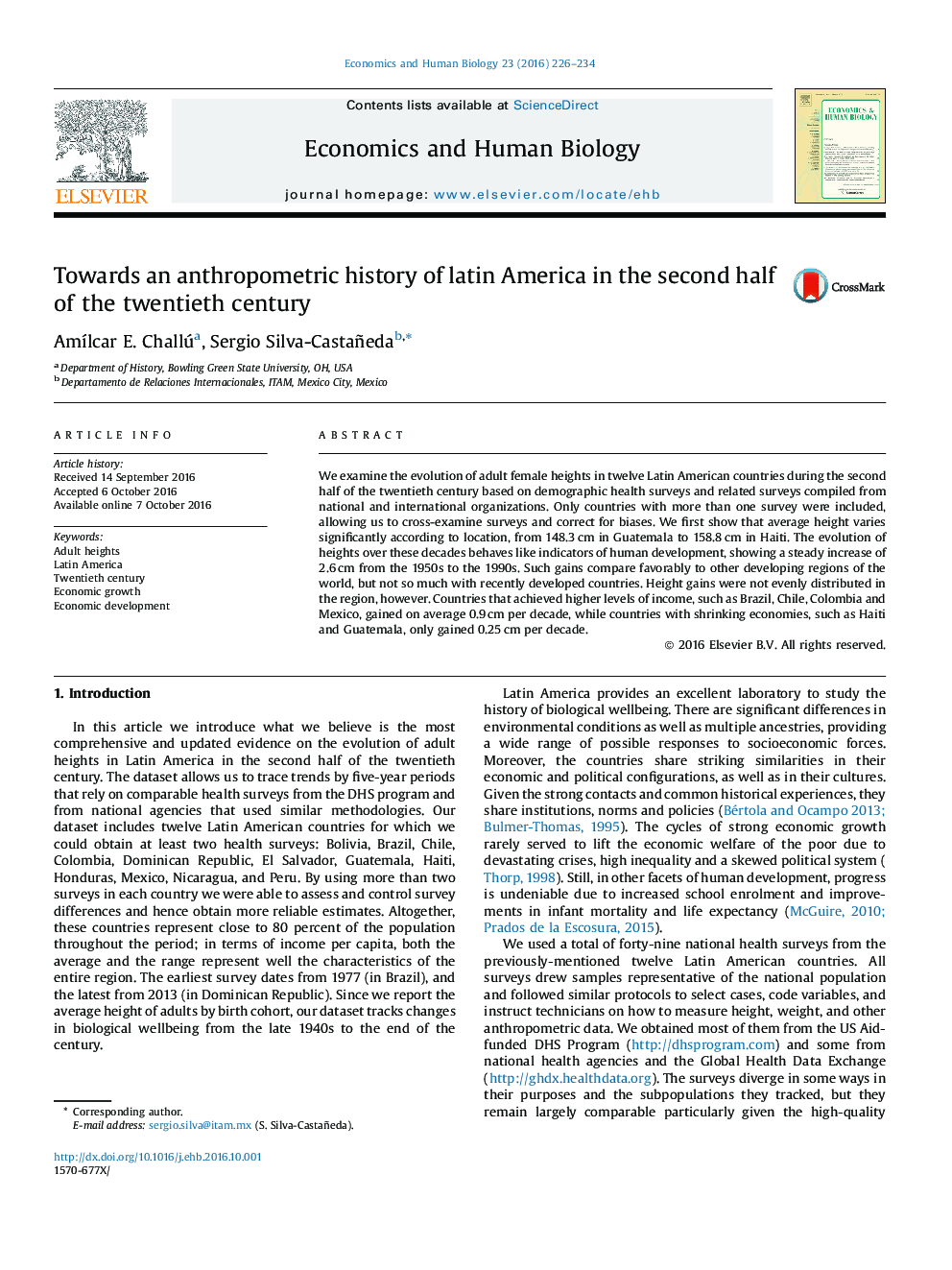| Article ID | Journal | Published Year | Pages | File Type |
|---|---|---|---|---|
| 5056840 | Economics & Human Biology | 2016 | 9 Pages |
â¢We compiled the most comprehensive evidence on the evolution of heights in Latin America for this period.â¢Height gains in Latin America compare favorably to other developing regions of the world.â¢Height gains in Latin America are lower than in recently developed countries.â¢GDP seems to be a good predictor of the evolution of heights over the period.â¢Location seems to be a good predictor of levels of heights around the region.
We examine the evolution of adult female heights in twelve Latin American countries during the second half of the twentieth century based on demographic health surveys and related surveys compiled from national and international organizations. Only countries with more than one survey were included, allowing us to cross-examine surveys and correct for biases. We first show that average height varies significantly according to location, from 148.3Â cm in Guatemala to 158.8Â cm in Haiti. The evolution of heights over these decades behaves like indicators of human development, showing a steady increase of 2.6Â cm from the 1950s to the 1990s. Such gains compare favorably to other developing regions of the world, but not so much with recently developed countries. Height gains were not evenly distributed in the region, however. Countries that achieved higher levels of income, such as Brazil, Chile, Colombia and Mexico, gained on average 0.9Â cm per decade, while countries with shrinking economies, such as Haiti and Guatemala, only gained 0.25Â cm per decade.
